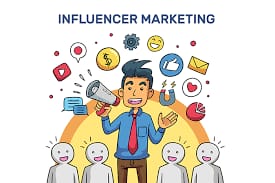
Influencer building (marketing) is a social media marketing strategy where brands collaborate with people who have a large following to promote their products or services. Influencer marketing (also known as influence marketing) is a form of social media marketing involving endorsements and product placement from influencers, people and organizations who have a purported expert level of knowledge or social influence in their field.
Influencer marketing is a form of social media marketing that involves partnering with influencers—individuals with a significant following or influence within a specific niche—to promote products, services, or brands. Influencers can be celebrities, industry experts, content creators, or even micro-influencers with a smaller but highly engaged following.
What is Influencer Building/Marketing?

Influencer marketing is a social media marketing approach that uses endorsements and product mentions from influencers. These individuals have a dedicated social following and are viewed as experts within their niche.
Influencer marketing works because of the high trust social influencers have built with their following over time. Recommendations from these influencers serve as a form of social proof to your brand’s potential customers.
Influencer marketing has become one of the most effective digital marketing strategies over the past decade, enabling brands to connect with consumers in more authentic and personalized ways than traditional advertising allows. Influencers, or individuals with a large and engaged social media following, often play a crucial role in shaping consumer perceptions, especially among younger audiences.
Types of influencer Building/Marketing
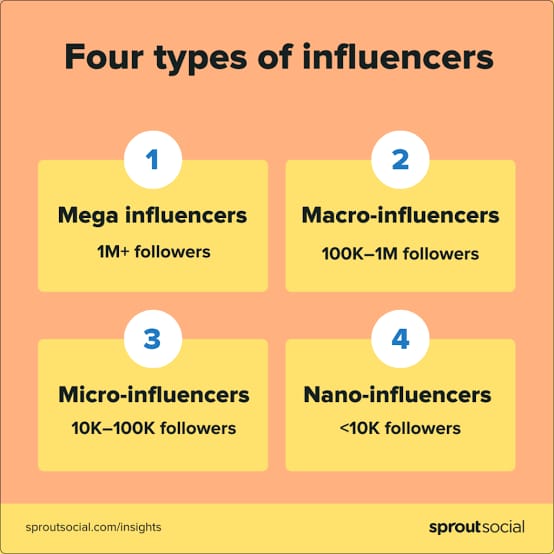
Mega or celebrity influencers
These influencers have a massive following of over 1 million and often include famous actors, musicians, athletes and other public figures. Their celebrity status allows them to captivate a diverse audience, making them ideal for large-scale brand awareness campaigns. Think: Cristiano Ronaldo.
Mega influencers can give your brand unparalleled exposure, but partnering with them can be incredibly expensive. Plus, since their audience is often broad, their engagement rates may not be as high as influencers with smaller, more niche followings.
Here are some businesses that might benefit from working with mega influencers:
- Large enterprise corporations that have the budget and resources
- Brands targeting a broad audience with varying characteristics
- Luxury or high-end brands that want to create a sense of exclusivity
Macro-influencers
With a following that typically ranges from 100,000 to 1 million, macro-influencers are established personalities within their respective niches.
These influencers have earned their reputation through consistent content creation and engagement over time, and are now thought leaders in their niche.
Macro-influencers offer a more targeted approach compared to celebrities, as their followers usually share common interests. Collaborating with macro-influencers can provide your brand with substantial reach, but it may still be relatively costly depending on your budget.
Here are some examples of brands that might work with macro-influencers:
- Startups seeking rapid exposure, growth and credibility (e.g., Canva)
- Nonprofit organizations looking to raise funds and awareness
- Hotels and airlines targeting a specific but large audience
Micro-influencers
With 10,000 to 100,000 highly engaged followers, micro-influencers are the rising stars of influencer marketing. These influencers typically have a strong presence on specific platforms, like Instagram, YouTube and TikTok.
Marketers love working with micro-influencers as they captivate a niche, passionate audience with their creative content, relatable recommendations and genuine interactions. They’re also more affordable than larger influencers.
Nano-influencers
Nano-influencers have between 1,000 to 10,000 followers. These influencers often have a strong connection with their audience, thanks to the close-knit community they’ve built and their personable content.
While they offer a smaller reach, nano-influencers can be excellent partners for businesses who want to target specific communities and demographics without breaking the bank. In fact, per the latest Influencer Marketing Hub data, 44% of brands prefer to partner with nano influencers in 2024, compared to 39% in 2023.

There are many reasons for this, namely, since nano-influencers work on a small scale, they dedicate more time and effort to individual partnerships. This means more tailored content for your brand and personal relationships within niche communities. They are perfect for businesses such as:
- Local businesses targeting specific communities, cities or regions
- Small businesses with limited budgets that want to run cost-effective campaigns
- Artisan, home-based or speciality food businesses reaching a niche audience interested in their one-of-a-kind products
How Influencer Marketing Works ?
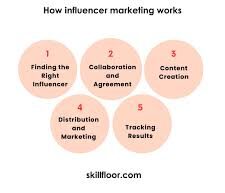
Influencer marketing operates on a foundation of credibility and trust. Influencers often specialize in specific niches, like fashion, fitness, technology, gaming, or beauty, which helps brands align their messaging to highly targeted audiences. Brands partner with influencers to create content that feels organic, fitting into the influencer’s established style and voice. This authenticity resonates more with followers, making them more likely to trust the recommendation.
Campaigns can include various types of collaborations:
- Sponsored Posts: The influencer shares a post that highlights a brand’s product or service.
- Product Reviews and Unboxings: The influencer shares their thoughts on a product, often giving an honest review that followers value.
- Affiliate Marketing: Influencers share unique links or codes, earning a commission on any sales generated.
- Giveaways and Contests: A fun way to generate engagement by offering followers a chance to win a product.
- Brand Ambassadorships: Long-term partnerships where an influencer represents a brand over time, building a deeper connection.
Why use influencer marketing?
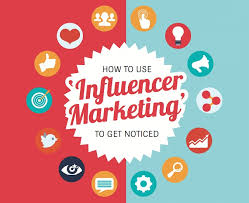
Influencer marketing can be an incredibly powerful marketing tool for you, and brands are already using it to their advantage, as these influencer marketing examples show.
According to The 2024 Influencer Marketing Report, almost half of all consumers (49%) make purchases at least once a month because of influencer posts; and almost all consumers (86%) make a purchase inspired by an influencer at least once a year. Not surprisingly, the influencer marketing industry is expected to grow to $24 billion in 2024 as indicated by the Influencer Marketing Hub’s latest research.
Here are more reasons why you should add influencers to your marketing mix.
Increased brand awareness
Collaborating with an influencer draws a wider audience to your brand. By featuring your brand in their content, influencers introduce it to new audiences who may not have been familiar with it. Also, the trust influencers hold with their followers enhances your brand’s reputation and credibility and boosts market awareness.
Precise audience targeting
Influencer marketing helps brands with precise audience targeting by connecting brands to influencers whose followers align with the brand’s target demographic. This ensures their message reaches the right audience and is delivered from a perspective that resonates with the audience, making the campaign more effective.
Higher conversions
Social proof is a powerful factor in the likelihood of making a purchase after seeing an influencer campaign, because it helps sway undecided consumers in your favor. Similarly, influencers often share interactive content such as giveaways, challenges and live sessions that drive engagement and prompt actions like making purchases or signing up for deals. They also share exclusive discount codes or special offers making it easy to track conversions directly linked to their promotion.
Building trust and authenticity with your audience
Influencers build trust with their followers by sharing personal experiences and opinions that resonate with their audience, making them more relatable. They further increase their credibility by being open about brand partnerships and only promoting products they genuinely support.
Plus, their seemingly unscripted content contrasts with traditional advertisements, making it sound authentic and spontaneous, which fosters personal connection with followers. This trust is further reinforced by how they respond to comments, making their audiences feel valued and heard, thus strengthening the bond. All this combined, helps influencers drive higher conversion rates for brands.
Benefits of Influencer Marketing
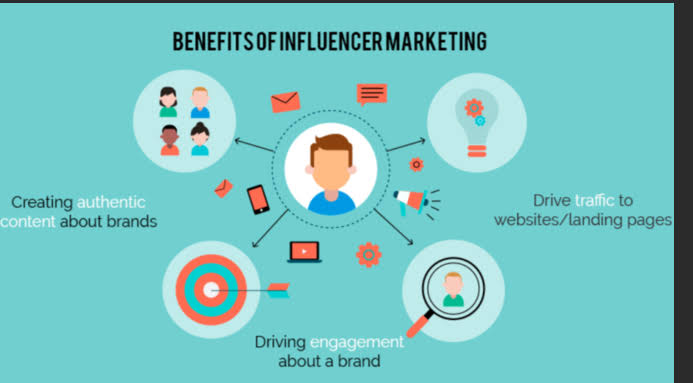
- Enhanced Credibility and Trust: Influencers have built-in trust with their followers, and a recommendation from them carries weight. People tend to trust recommendations from friends and public figures they admire more than brand advertisements.
- Increased Reach and Awareness: With millions of potential followers, influencers allow brands to reach new audiences quickly, expanding visibility far beyond what they might achieve alone.
- Targeted Marketing: Influencers often serve niche audiences, helping brands reach specific demographics that align with their goals. For example, a vegan skincare brand might collaborate with a beauty influencer focused on cruelty-free products.
- Higher Engagement Rates: Followers interact with influencer content more actively than they do with brand posts, leading to higher engagement rates, including likes, comments, and shares.
- Cost-Effective for Small Businesses: Collaborating with nano or micro-influencers can be an affordable strategy for small businesses, often yielding high engagement without the high costs associated with larger campaigns.
Challenges in Influencer Marketing
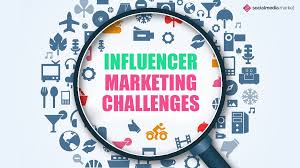
Finding the Right Influencer: It’s crucial to align with influencers who share your brand values and target audience. Brands must research and vet influencers, ensuring they have genuine engagement (not just high follower counts).
Authenticity Concerns: If a collaboration feels overly scripted or out of character, audiences may sense it’s purely transactional, which can lead to a lack of trust. Influencer marketing’s success hinges on authenticity.
Measurement of Success: Measuring ROI for influencer marketing can be challenging, especially for awareness campaigns. While metrics like engagement, reach, and clicks can be tracked, connecting these to conversions can be complex.
Risk of Controversy: Influencers are people with their own personalities and opinions, and sometimes they can be involved in controversies that might impact the brand’s reputation. Brands should have contingency plans for managing such risks.
Cost for Mega and Macro-influencers: Working with large influencers can be costly, and for many brands, the return on investment might not justify these expenses. Balancing budgets and influence level is key.
Types of Influencer Marketing Campaigns

Awareness Campaigns: Focused on generating buzz, these campaigns aim to introduce a brand or product to a wide audience. They’re typically best suited to large-scale influencers.
Engagement Campaigns: These campaigns encourage followers to interact, often through challenges, comments, or sharing their experiences with the brand.
Traffic and Conversion Campaigns: These campaigns use trackable links or discount codes to drive measurable conversions, such as website visits or purchases.
User-Generated Content: Many brands encourage influencers and followers to create content with their product, amplifying their reach through re-shares and fostering a sense of community.
Strategies for Effective Influencer Marketing
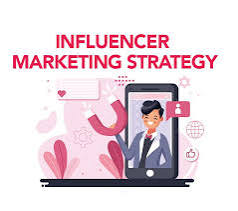
- Define Clear Goals and KPIs: Decide if the campaign goal is awareness, engagement, or conversions, and set measurable KPIs. These could be impressions, reach, engagement rate, or clicks.
- Prioritize Authenticity: Work with influencers who genuinely resonate with the brand. Audiences are more likely to engage when they feel the endorsement is authentic.
- Choose the Right Platform: Different platforms serve different purposes. Instagram and TikTok are popular for visual-driven, lifestyle content, while YouTube is great for in-depth reviews, and LinkedIn is more suitable for B2B partnerships.
- Use Trackable Links and Codes: Tracking is essential to measure the ROI of influencer campaigns. Many brands use UTM codes, affiliate links, or unique discount codes to monitor traffic and sales.
- Encourage Creative Freedom: Allow influencers to create content in their own style, as overly restrictive guidelines can result in content that feels staged and less authentic.
- Leverage Long-Term Partnerships: Building relationships with influencers over time helps establish consistent brand presence and trust, moving beyond one-off promotions.
- Measure and Analyze Results: Use insights gained from each campaign to improve future efforts. Analytics tools can track engagement rates, audience demographics, and conversion metrics, helping brands refine their strategies.
The Future of Influencer Marketing

Rise of Micro and Nano-influencers: These smaller influencers have more targeted audiences and higher engagement rates, which are increasingly valuable to brands focused on authentic connections rather than mass reach.
Video Content Domination: Platforms like TikTok and YouTube highlight the increasing importance of video in influencer marketing, as it engages audiences more effectively than static content.
AI and Virtual Influencers: AI-generated influencers, such as Lil Miquela, show that the future of influencer marketing may involve digital personalities who can collaborate with brands in new ways. Though there’s still some debate on authenticity, they offer creative, controlled brand partnerships.
Emphasis on Brand Alignment and Ethics: Consumers today care about the ethical stances of the brands and influencers they support. Influencers who champion social causes and demonstrate genuine alignment with a brand’s values can be especially effective.
Greater Focus on ROI and Performance Tracking: As brands increasingly seek measurable ROI, advanced analytics tools will play a larger role, helping brands better understand and optimize influencer partnerships.
Conclusion

Influencer marketing, when done well, is an authentic and cost-effective approach that helps brands connect with consumers on a personal level. As influencer marketing continues to evolve, brands must adapt, keeping authenticity at the heart of their strategies and measuring success carefully to maximize impact.
The conclusion of influencer marketing highlights its significance and effectiveness in modern marketing strategies. Influencer marketing has proven to be a powerful tool for brands to reach and engage audiences by leveraging the trust, authority, and credibility that influencers have with their followers. Through authentic, relatable content, influencers create a direct connection with their audience, often resulting in higher engagement and conversion rates than traditional advertising.
While influencer marketing offers unique advantages, it also comes with challenges. Brands must carefully choose influencers who align with their values and target demographic to ensure authenticity and effectiveness. Additionally, the rapid growth of influencer marketing has led to increased regulation and scrutiny, requiring transparency and ethical practices.
In summary, when done strategically and ethically, influencer marketing can build brand awareness, foster trust, and drive sales. As the digital landscape evolves, influencer marketing will likely continue to be a crucial element for brands aiming to connect with consumers in a personalized and impactful way.
